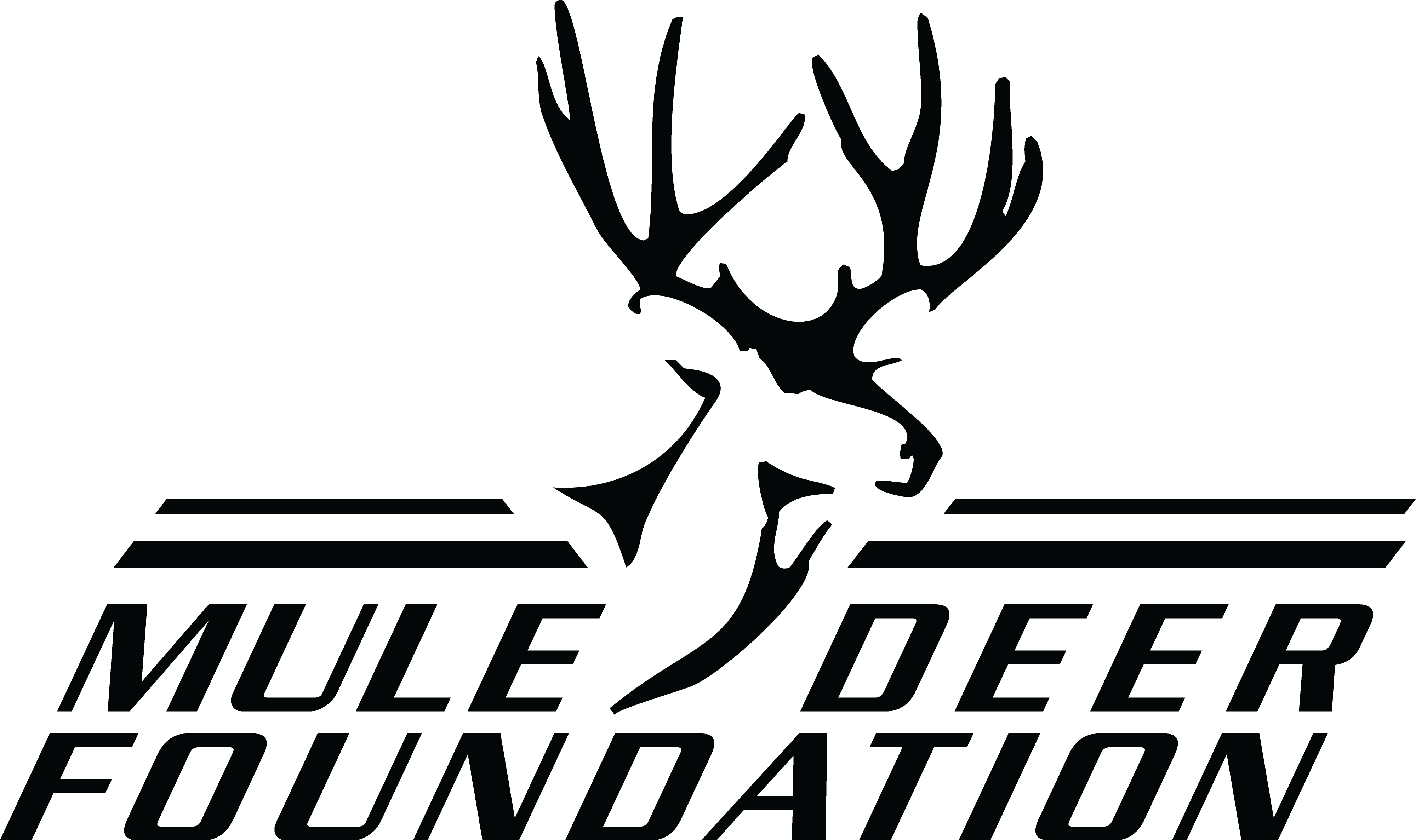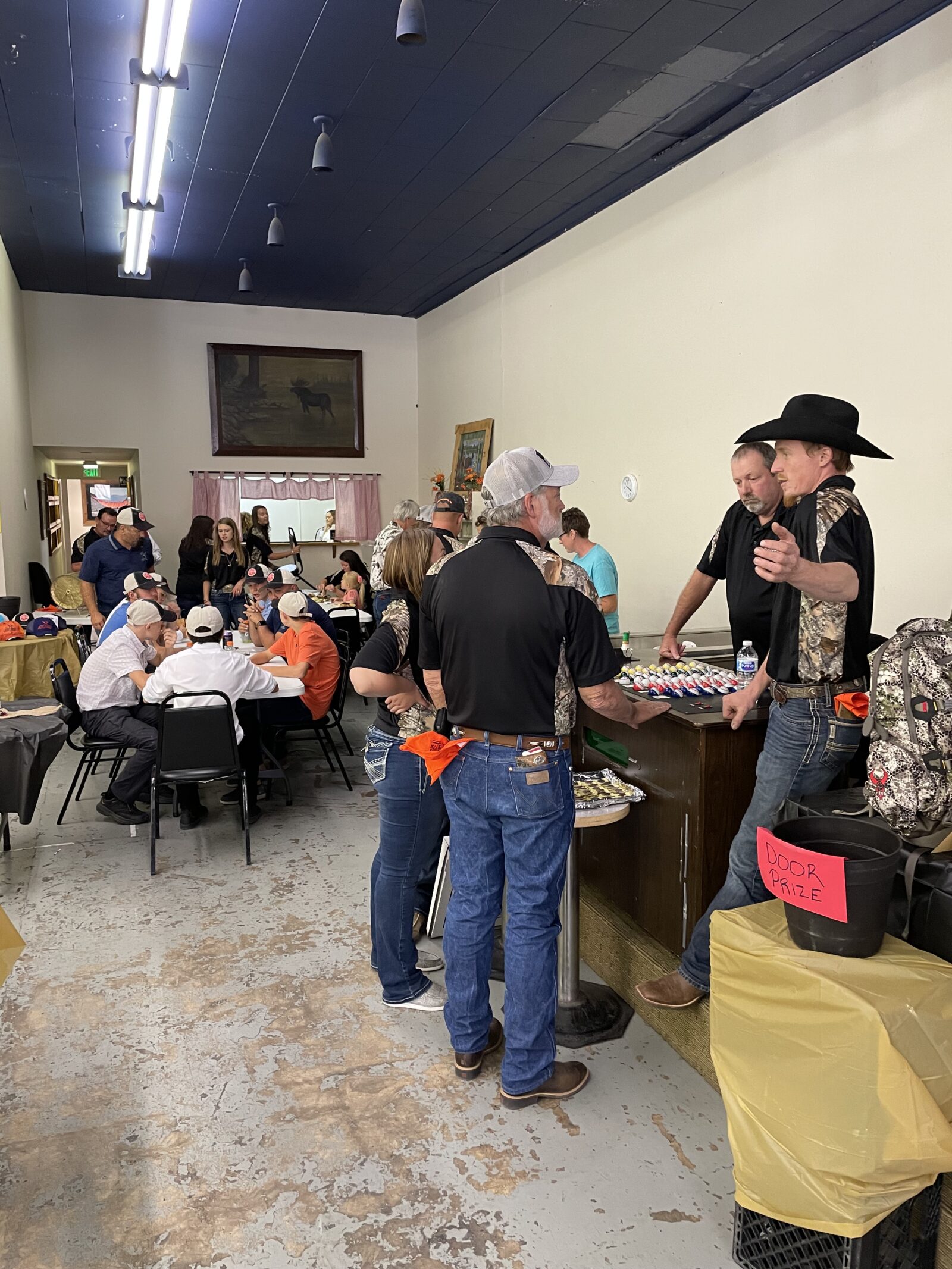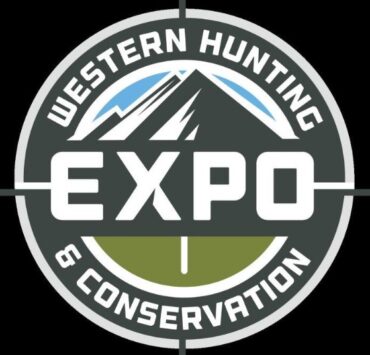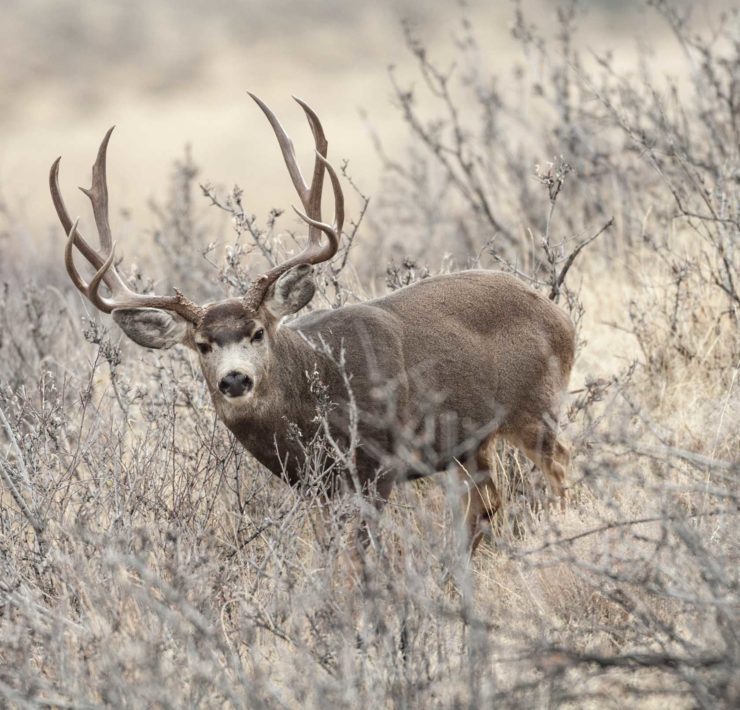The Mule Deer Foundation is the only conservation group in…
Shawn Blajszczak – Wyoming Regional Director
The Mule Deer Foundation has been staying very active in Colorado. We raised a great deal of funding for wildlife conservation through our statewide deer license raffles and auctions in the spring of 2021. Recently we had several amazing banquets and have been working on projects throughout the state. It has been great to get out there and get back to normal having events and spreading camaraderie while focusing on conserving mule deer and their habitat.
This fall, MDF Regional Director Charlie Stockstill helped with the Pass the Buck chapter banquet at the Moose Lodge in downtown Rifle. He worked with Jon and Joan Nestor and their family to continue the tradition for this event. Way beyond 125 people attended the event, and they came to party and support their favorite big game animal. When the dust settled, and the accounts tallied, it was a most successful event. In keeping with the spirit of the chapter name, the buck (Chapter Chair) was passed to Kristen Sidor (the Nestor’s eldest daughter) to head up the chapter until the granddaughter comes of age! We appreciate all the work the Nestors and other Rifle chapter volunteers put into this event year-in and year-out.
We look forward to a fun banquet season this spring and early summer as well as getting a great deal of conservation work done on the ground here in Colorado. Here’s an overview of some of the work that’s been going on.
Conservation Efforts
There is no single factor that has the most influence on the health of mule deer populations, however the “death by a thousand cuts” of so many changes to the landscape is certainly affecting Colorado’s deer. In late September 2021, Governor Jared Polis and the state Department of Natural Resources and Department of Transportation released a big game policy report titled “Opportunities to Improve Sensitive Habitat and Movement Route Connectivity for Colorado’s Big Game Species.” The Colorado big game policy report follows the May 2020 release of a Colorado Parks and Wildlife (CPW) report on the status of big game winter range and migration corridors in the state.
While the 2020 report documents existing knowledge of movement patterns and describes research and data gaps, the big game policy report released this fall outlines specific actions that state agencies and local governments can take to improve connectivity and address the primary challenges in seasonal habitats. The recommendations, including the requirement to develop a statewide habitat conservation and connectivity plan, will allow all partners to target limited resources to the most important areas that will make the biggest difference in the health of our big game herds.
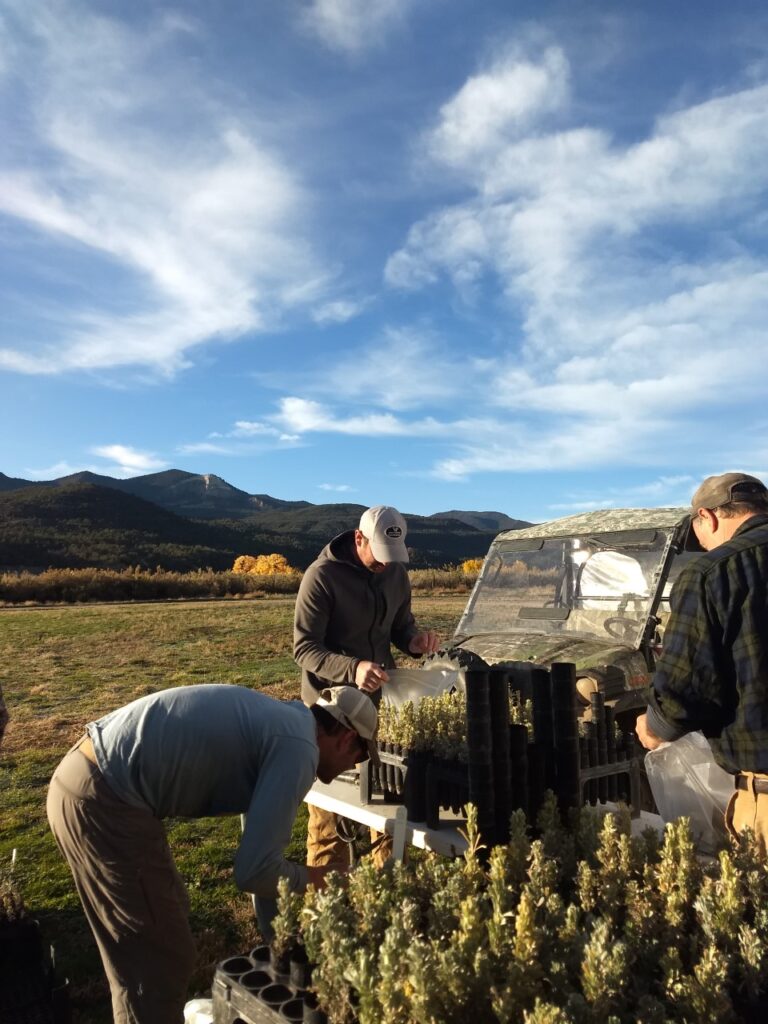
A big focus of the report is reducing wildlife-vehicle collisions. The state will be increasing collaboration to improve transportation planning to include wildlife crossings. We have seen how well this can work with the overpasses, underpasses, and funnel fencing that was built along Highway 9 near Kremmling. Since the project was completed, CPW has reported an almost 90% reduction in wildlife-vehicle collisions along that stretch of the highway. Similarly, news outlets in the fall showed video of mule deer bucks grazing along one of the new underpasses installed in the I-25 Gap project between Denver and Colorado Springs.
The report also discusses the need to properly plan and site residential growth and energy development to conserve priority areas like winter range. We’re all seeing the increase in new housing being built, often in areas where we used to watch a lot of deer. Local planning decisions can provide an opportunity for MDF members to engage so that we can call attention to these areas that are so important to deer. In addition, the big game policy report discussed the increase in year-round outdoor recreation as an issue. In 2018, the Statewide Comprehensive Outdoor Recreation Plan identified this as a concern and CPW has been conducting research to determine how this increase in recreation might be impacting big game species.
The big game policy report identifies plenty of areas where habitat conservation and restoration, as well as proactive management can help mule deer and other big game species. MDF has existing agreements with the Bureau of Land Management (BLM) and the U.S. Forest Service (USFS), and partnerships with CPW and other non-profit conservation organizations. As a result, we have been actively working on habitat restoration efforts in Colorado for a number of years. There have been several forest stewardship projects on the Uncompahgre Plateau that have improved forest habitat and summer range. In addition, we are working with partners to restore the sagebrush habitat that was lost in the Pine Gulch fire. In November, MDF staff and volunteers planted 7,700 sagebrush plants to help jumpstart the return of this important forage for wintering deer.
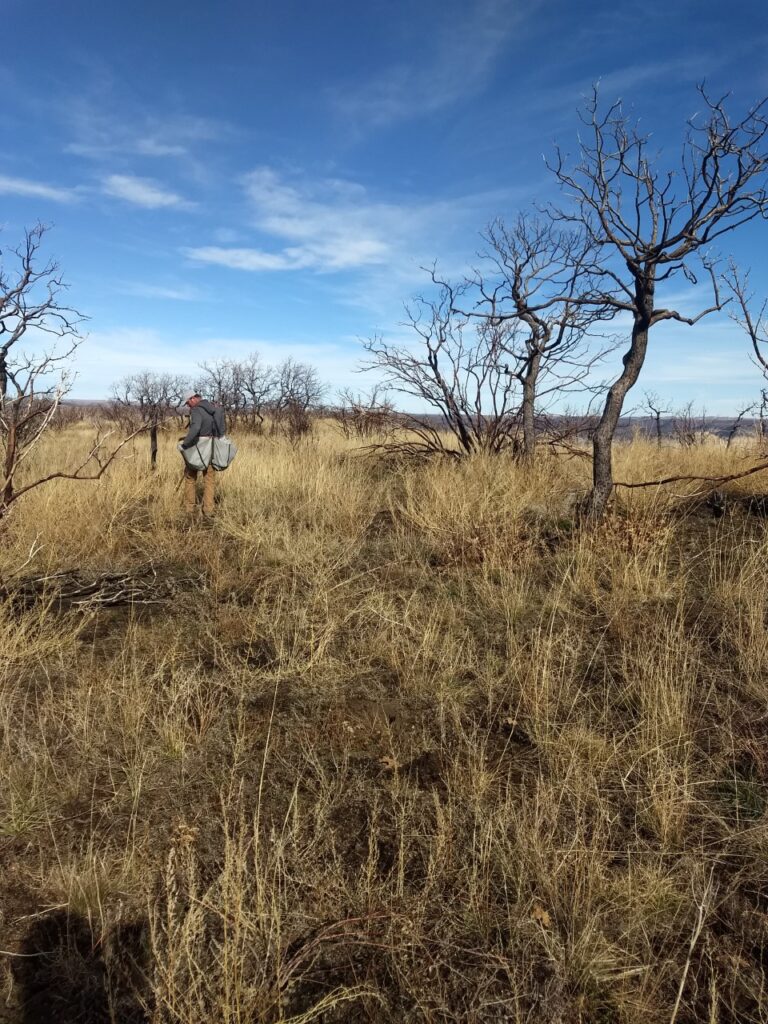
New Staff in Colorado
In other exciting news, MDF is hiring two new staff members to work in Colorado that will be up and running early in 2022. First, we will have a new Regional Director coming on board in Colorado to help with getting good work done on the ground and with fundraising in the state. We appreciate all the chapters and volunteers who patiently worked with us over the past year when we had a transitional team helping to run events, schedule conservation projects, and help with volunteer days in Colorado. We are excited to watch MDF continue to grow in the state—Coloradans step up to the plate time and time again to conserve their iconic mule deer for generations to come through MDF. The new Regional Director will be a big help to all of you and we’re sure you will all welcome them into the fold.
MDF is also working in collaboration with the BLM, Intermountain West Joint Venture (IWJV), Pheasants Forever, CPW, and other local and state partners to hire a Northwest Colorado Sagebrush Conservation Coordinator. This shared partnership position will work to increase the delivery and implementation of conservation efforts across the region. The new coordinator will provide range and wildlife technical assistance for collaborative conservation, management, and restoration efforts in crucial sagebrush steppe habitat for lands managed by the BLM Grand Junction and White River Field Offices as well as adjacent private and state lands.
We are very excited to have this new conservation position to coordinate habitat projects in some of the best mule deer country in the state. This person will also be working with Nicole Reed, MDF’s Habitat Partnership Coordinator in southern Wyoming. Two of Wyoming’s priority migration corridors for mule deer are the Baggs and Platte Valley herds, and both herds spend part of their year in Colorado. As a result, Nicole is also working in parts of northern Colorado on habitat projects that will benefit deer along their entire migration route. We are expecting to see a lot of great projects coming online from both of these staff members and will need support from MDF chapters and volunteers. Keep your eye out as things get up and running to see how you may be able to help.
We hope you’re excited about all the good things going on in Colorado. If you’re already a member and active in your local chapter, thank you for your help and we look forward to your continued involvement. If, however, you are reading about what MDF is doing in Colorado in a magazine that was passed on to you, there is no better time to join than now. The personal satisfaction of knowing you are conserving mule deer and their habitat makes volunteering well worth it, not to mention all the amazing people you meet at events and volunteer days.
The Mule Deer Foundation is the only conservation group in North America dedicated to restoring, improving and protecting mule deer and black-tailed deer and their habitat, with a focus on science and program efficiency. MDF is a strong voice for hunters in access, wildlife management and conservation policy issues. MDF acknowledges regulated hunting as a viable management component and is committed to recruitment and retention of youth into the shooting sports and conservation. Get involved in your state or become a member at www.muledeer.org or call 1-888-375-3337.


